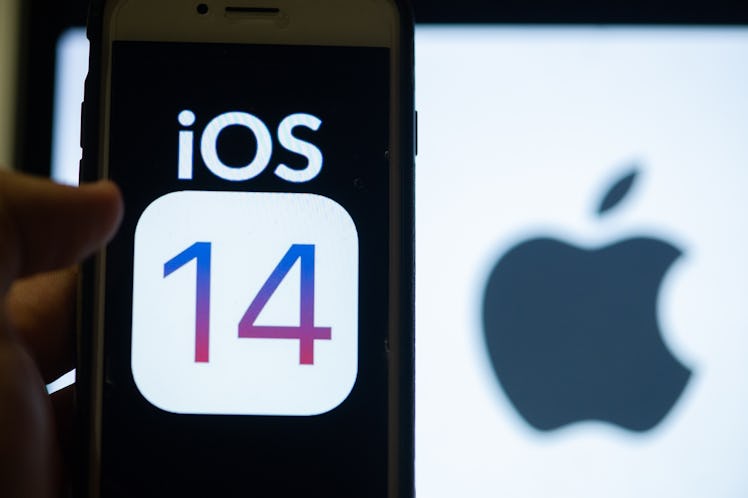
You Can Customize Your iPhone's Home Screen With These Cool iOS 14 Updates
Since Apple rolled out its latest operating system on Wednesday, Sept. 16, iOS 14 users have gotten the chance to revamp their Home Screens with a cleaner, less crowded layout. In addition to the ability to add widgets to the Home Screen, people can also organize all their apps with the new App Library — and the makeover looks so good. Here's how to change your iOS 14 Home Screen for a much more streamlined experience.
While Apple's iOS 14 launch came with no shortage of cool features, one of its most useful aspects is the ability to declutter your Home Screen while making it a lot more stylish and functional. To make your most important apps the easiest to access, you'll want to organize your apps into your App Library, which will appear as the last page when you swipe left on your Home Screen. The new feature will automatically organize your apps into separate folders like Recently Added, Utilities, Travel, Health & Fitness, and Social.
To clean up your Home Screen, you can long press on any app and then tap the option to "Remove App" and then select "Move to App Library." To make the process of removing a bunch of Home Screen apps at once, you can do a long press of an empty area on your screen. You can then select the "minus" button that'll appear on apps you want to move, then select the option to "Move to App Library."
Meanwhile, if you want to add one of your apps to the Home Screen for easy access, you can do a long press on any of the apps in the App Library (or search them in the search field at the top), and then choose to copy the icon to your Home Screen. This will store it both in your App Library as well as on your Home Screen.
Once you've organized your apps so only the ones you use the most appear on your Home Screen, you can add widgets to your Home Screen. The widgets offer users a preview of the app before you can tap on it to fully open the corresponding app, and they let you quickly see the weather, reminders, calendar appointments, and more, without fully opening the app. With iOS 14, you can now also display any image of your choice as a widget in addition to customizing the look of any default widgets, which you can initially find when you swipe left to right on your Home Screen.
To start, you'll first need to download the app Widgetsmith, then choose the widget size you'd like to create. From there, you'll see the ability to personalize your go-to widgets with static images, as well as different fonts and colors. Once you're done, you can long press on your Home Screen to bring up the customizing options, then tap the plus sign that'll appear in the top left of your screen. Scroll down until you find the widget you want to add, then tap it.
To add your own app icons for existing apps like Instagram and TikTok, you'll need to download Apple’s Shortcuts app and go to the plus sign located in the top right corner of the app. You'll then want to choose "Add Action," followed by "Scripting," "Open App," and "Choose," and then tap on the app you're trying to change. Next, tap "Next," change the name of the app, and tap "Done."
After that, tap the three-dot menu next to the shortcut action that you just made twice in a row, then tap "Add to Home Screen." Once you do this, you'll see the option to go to "Home Screen Name and Icon," after which you'll be able to select any image from your camera roll to replace the original app image.
You can also long-press on a widget or app, tap "Edit Home Screen," and move widgets and apps to other pages of your Home screen by holding on the widget or app you want to move and then sliding it to the edge of your phone's screen. Be sure to tap "Done" in the top right corner when you have it where you want it.
It's a lengthy process, but judging from peoples' reactions on Twitter, it's well worth it.
Unfortunately, people can't customize where their apps go into the App Library or add new custom categories, and the process to getting your aesthetic of choice might be an arduous one, but there's no denying your iOS 14 Home Screen can be your most visually pleasing one yet.
This article was originally published on